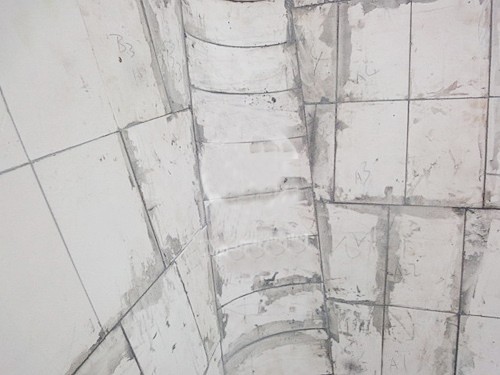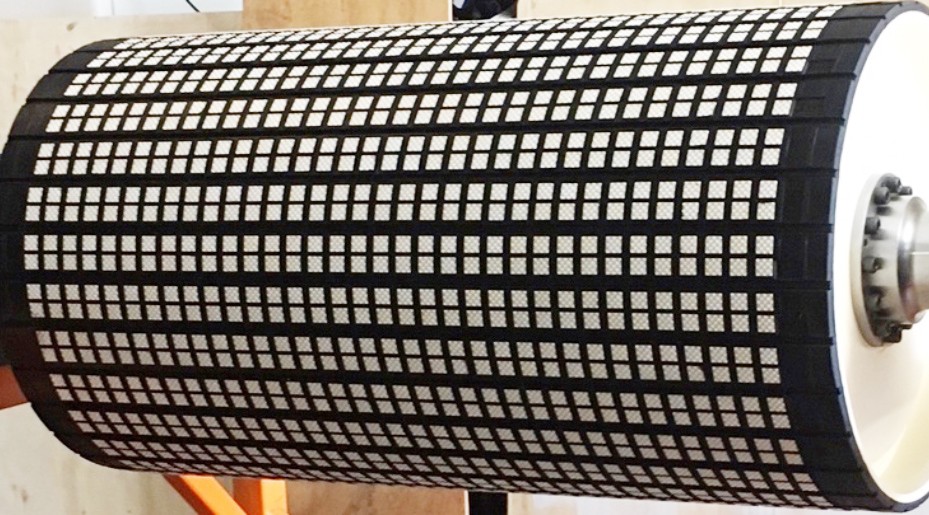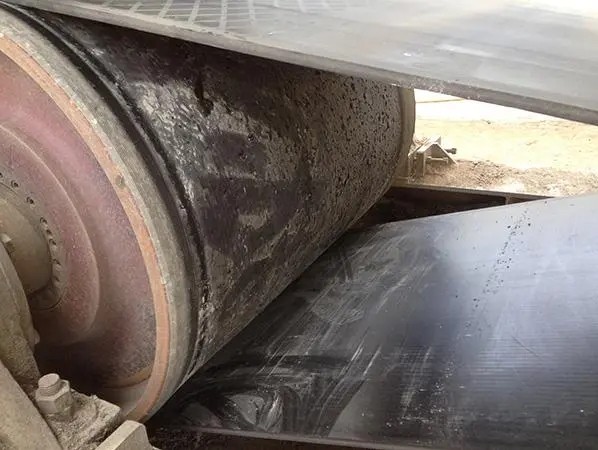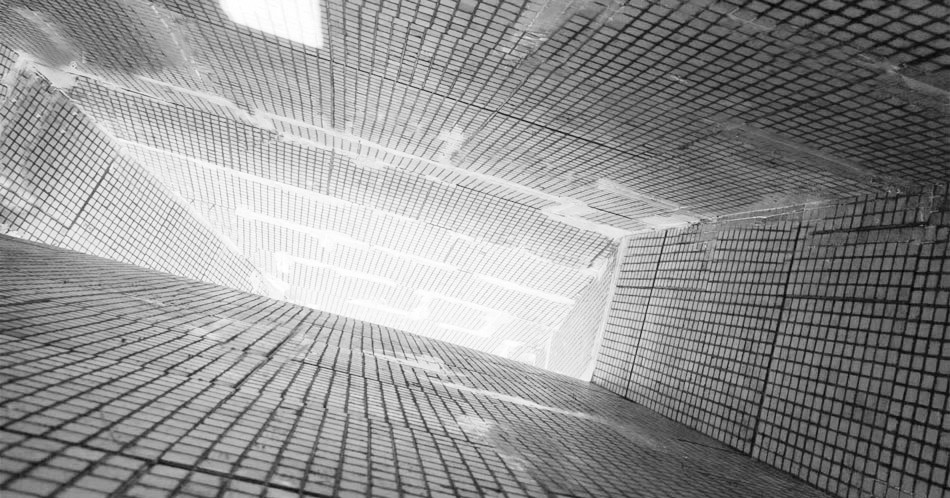
In the complex tapestry of our daily lives and the intricate world of industrial production, wear is an omnipresent and often problematic phenomenon. It has far - reaching consequences that impact various aspects of our mechanical systems and processes. By delving deeper into the concept of wear, its classification, and the mechanisms behind different types of wear, we can better appreciate the significance of finding effective solutions. Moreover, understanding how wear - resistant ceramics can combat wear provides valuable insights into optimizing industrial operations and prolonging the lifespan of equipment.
Wear is an inevitable and complex process that occurs within systems where objects or parts are in contact and experience relative motion. This phenomenon is ubiquitous in both production environments and our day - to - day experiences. In industrial settings, the consequences of wear are particularly significant. For instance, in a manufacturing plant, wear can consume a substantial amount of energy during machine operation. This energy consumption not only adds to operational costs but also affects the overall efficiency of the production process.
Furthermore, wear has a direct impact on the lifespan of machine components. As components experience wear, their geometric size (volume) gradually decreases. This reduction in size can lead to a loss of the originally designed functions. In more severe cases, it can result in complete failure of the component. Failure can manifest in different ways, such as a total loss of function, a significant reduction in functionality, or severe damage that poses potential risks. When a component fails, continued use of the machine becomes either unsafe or unreliable, which can lead to costly downtime, repairs, and even potential accidents in industrial settings.

Abrasive wear, commonly referred to as abrasion, stands as the most prevalent form of mechanical wear. We can observe this type of wear in numerous real - world applications. For example, consider the wear of excavator teeth. These teeth are constantly in contact with hard and abrasive materials during excavation operations. The rough and abrasive nature of the soil, rocks, and other materials they interact with causes the surface of the teeth to gradually wear away. Similarly, in a ball mill, the liners are subject to abrasive wear. The grinding action of the balls against the liners, along with the presence of the materials being milled, which may contain hard particles, leads to the loss of material from the liner surface.
Abrasive wear occurs under specific conditions related to the interaction between surfaces and hard particles or protrusions. There are two main scenarios in which it takes place. Firstly, when a rough, hard surface slides over a softer surface, the harder surface can act like a file, gradually removing material from the softer one. Secondly, when free hard particles are present between two friction surfaces, these particles can cause significant wear as they move and scratch the surfaces during relative motion.
Several factors influence the extent of abrasive wear. One crucial factor is the relative hardness of the materials involved. When the hardness of the material being worn is significantly higher than that of the abrasive, the wear resistance is enhanced. In fact, when the hardness of the abrasive is within 0.7 - 1.0 times that of the material, abrasive wear is minimal or may not occur at all. This relationship highlights the importance of material selection based on the expected abrasive environment.
The geometric characteristics of the abrasives also play a vital role. The shape, sharpness, and size of the abrasive particles can impact wear. Generally, the amount of wear is proportional to the particle size within a certain range. However, once the particles reach a particular size threshold, the wear amount no longer has a linear correlation with particle size. This is because larger particles may not be able to penetrate the surface as effectively or may have different contact mechanics compared to smaller particles.
Repeated friction is another factor. In the initial stages of wear, as the surfaces start to interact, the wear rate tends to decrease with an increasing number of frictional contacts. This is because the roughness of the surface may improve over time, with sharp edges being worn down or material being redistributed. Eventually, the wear rate stabilizes, reaching a steady - state condition where the rate of material removal remains relatively constant.
Sliding speed primarily affects metal materials in the context of abrasive wear. If the sliding speed is not high enough to cause annealing or tempering of the metal (changes in its microstructure due to heat generated by friction), the wear rate is often independent of the speed. This is because the wear mechanism in this range is dominated by the mechanical interaction of the abrasive with the surface rather than thermal effects.

2. Adhesive Wear
Adhesive wear is a common occurrence in metal friction pairs, especially when two surfaces in relative motion are in mixed or boundary friction conditions. In such situations, high loads and high sliding speeds can disrupt the boundary film that usually separates the two surfaces. This breakdown allows the peaks of surface roughness to come into direct contact. When the surfaces continue to move relative to each other under these conditions, bonding points form between them.
As the motion continues, these bonding points break, and this can lead to material transfer from one surface to the other or the detachment of material as wear particles. This process is known as adhesive wear. The likelihood and severity of adhesive wear are influenced by several factors.
Material properties play a significant role. The mutual solubility of the paired materials is a key determinant. When two materials have a high mutual solubility, such as identical metals or metals that are highly soluble in each other, the tendency for adhesion and subsequent adhesive wear is much higher. In contrast, dissimilar metals or materials with low solubility are less likely to adhere strongly, reducing the occurrence of adhesive wear. For example, if we consider a friction pair made of two different types of steel with different compositions, the adhesive wear characteristics will vary depending on their mutual solubility.
The microstructure of the materials also affects adhesive wear. Different materials have distinct microstructures that can either enhance or reduce their resistance to adhesive wear. For instance, cast iron or carbon steel often has better resistance compared to austenitic or stainless steel. This is because the brittle nature of cast iron and carbon steel can cause the bonding points to break more easily during relative motion, reducing the likelihood of extensive material transfer and wear.
Load and sliding speed are critical factors as well. There is a specific critical pressure value for adhesive wear. When the surface pressure of a friction pair reaches this critical value, adhesive wear can increase significantly. In extreme cases, this can lead to seizure, where the two surfaces become stuck together. Sliding speed influences adhesive wear mainly through its impact on temperature. As the sliding speed increases, the frictional heat generated can cause changes in the surface properties of the materials, potentially increasing the likelihood of adhesive wear.
Surface fatigue wear is a complex process that occurs when a material is subjected to cyclic contact stress. This type of wear is often observed in components that experience repeated loading and unloading cycles, such as gears, bearings, and rolling elements. During these cycles, fatigue cracks start to form at the surface or just below the surface of the material.
As these fatigue cracks propagate, they eventually lead to the detachment of small pieces of material, resulting in wear. The resistance to surface fatigue wear is influenced by several factors. Material hardness is an important one. Generally, as the surface hardness of a material increases, its resistance to fatigue wear also increases up to a certain point. However, if the hardness exceeds a particular threshold, the material may become more brittle, and the resistance to fatigue wear can actually decrease. This is because the increased brittleness can make the material more prone to crack propagation.
Surface roughness also plays a significant role. A lower surface roughness reduces the stress concentrations at the contact points during cyclic loading. This, in turn, decreases the likelihood of crack initiation and propagation, thereby increasing the resistance to fatigue wear. Frictional forces acting on the contact surfaces are another influencing factor. These forces can exacerbate the formation and growth of cracks by adding additional stress to the already stressed material during the cyclic loading process.
Corrosive wear is a unique form of wear that involves chemical or electrochemical reactions. In many industrial environments, machine parts are exposed to various chemical substances either in the form of gases, liquids, or solid contaminants. When the surface of a part undergoes friction in the presence of these reactive media, chemical reactions can occur. These reactions can lead to the degradation of the material surface, resulting in material loss.
For example, in a chemical processing plant, pipes and valves may be exposed to corrosive chemicals. If these components are also subject to mechanical stress due to fluid flow or other factors, the combination of chemical attack and mechanical wear can accelerate the wear process. Electrochemical corrosion can also occur in certain situations, especially when there are differences in electrical potential between different parts of a component or between the component and the surrounding medium.
Fretting wear is a relatively specialized form of wear that occurs under specific conditions. It happens when two contact surfaces experience small - amplitude relative vibrations. These vibrations typically have an amplitude of less than 100 μm and occur under the influence of external load fluctuations. During this process, tiny wear particles are generated between the contact surfaces. These particles are often oxides, as the friction and vibration can cause the oxidation of the surface material.
This type of wear is commonly observed in situations where there are small, repetitive movements between components that are in contact under load. For example, in bolted joints or press - fit assemblies, the small relative movements caused by vibrations during operation can lead to fretting wear. Over time, this can cause damage to the surfaces and potentially affect the integrity of the joint or assembly.

To effectively combat wear, two fundamental strategies are commonly employed: increasing material hardness and improving surface smoothness. When considering common wear - resistant materials, metal materials have certain limitations. The hardness of metals can be increased, but this often comes at a significant cost. As the hardness requirements increase, the cost of producing and processing these metals can rise rapidly. Moreover, even with increased hardness, metals may still not be suitable for applications in severe wear conditions.
In contrast, wear - resistant ceramics offer several advantages. Ceramics can achieve high hardness ratings with relative ease. For example, many wear - resistant ceramics can reach hardness levels of HRA88 or even HRA90. This high hardness provides excellent resistance against abrasive wear, as the ceramic surface is able to withstand the scratching and cutting action of hard particles. Additionally, the high hardness also helps in resisting fatigue wear. The ceramic structure can better endure the cyclic contact stress without significant crack formation or propagation.
Ceramics also incorporate self - lubricating components in some cases, which helps in resisting adhesive wear. These self - lubricating properties reduce the friction between surfaces during relative motion, minimizing the formation of bonding points and subsequent material transfer. One of the primary components of wear - resistant ceramics, alumina, has outstanding chemical stability. This chemical inertness makes ceramics highly resistant to corrosive wear. Whether exposed to acidic, alkaline, or other reactive chemical environments, the ceramic surface remains relatively unaffected, reducing the impact of chemical reactions on the material's integrity.
In summary, wear - resistant ceramics possess a unique combination of properties that make them ideal materials for combating wear in industrial applications. Their ability to resist multiple types of wear simultaneously offers significant advantages in improving the durability and performance of industrial equipment, thereby reducing maintenance costs and increasing productivity.
The use of wear - resistant ceramics has spread across various industries due to their excellent wear - resistant properties. In the mining industry, for example, crushers and grinding mills are constantly subjected to abrasive wear from the rocks and minerals being processed. Wear - resistant ceramic liners and grinding media can significantly increase the lifespan of these equipment, reducing the need for frequent replacements.
In the power generation industry, components in coal - fired power plants, such as pulverizers and conveyors, face severe wear from coal particles. Ceramic coatings or components can improve the wear resistance of these parts, enhancing the overall efficiency and reliability of the power generation process. In the automotive industry, wear - resistant ceramics are used in engine components, such as piston rings and valve seats, to reduce friction and wear, thereby improving engine performance and fuel efficiency.
Research in the field of wear - resistant ceramics is ongoing, with the aim of further improving their performance. New ceramic compositions are being developed that may offer even higher hardness, better self - lubricating properties, and enhanced chemical resistance. Nanotechnology is also being explored to create ceramics with improved microstructures at the nanoscale. These nanoceramics could potentially have superior wear - resistant properties compared to traditional ceramics.
In addition, advancements in manufacturing techniques are enabling the production of more complex and precise ceramic components. This allows for better integration of wear - resistant ceramics into existing equipment designs, maximizing their effectiveness. The future of wear - resistant ceramics looks promising, with the potential to revolutionize the way industries deal with wear - related problems and further optimize industrial processes.
Wear is a complex and costly problem in both daily life and industrial production. Understanding the different types of wear and their underlying mechanisms is crucial for developing effective solutions. Wear - resistant ceramics have emerged as a powerful tool in the fight against wear, offering unique properties that make them highly suitable for a wide range of applications. As research and development continue, we can expect even more advanced wear - resistant ceramic materials and technologies to further improve the durability and performance of industrial equipment, contributing to more efficient and sustainable industrial operations.

Submit your demand,
we will contact you ASAP.

Sanxin New Materials Co., Ltd. focus on producing and selling ceramic beads and parts such as grinding media, blasting beads, bearing ball, structure part, ceramic wear-resistant liners, Nanoparticles Nano Powder

